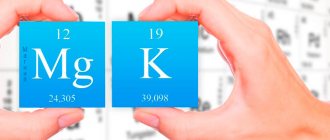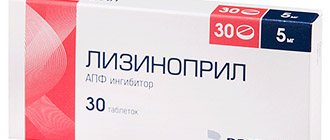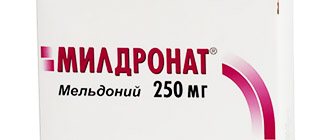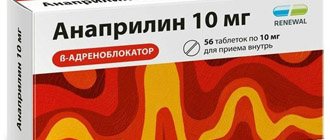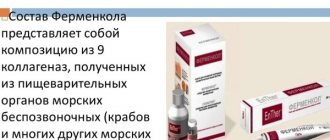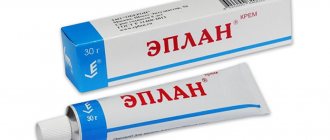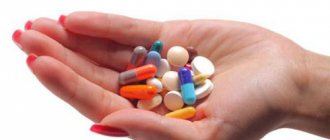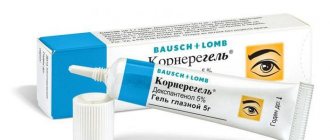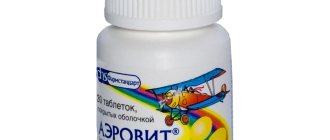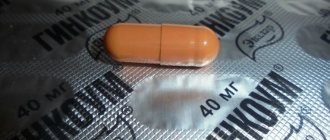Instructions for use of Gammalon
The drug was developed in Japan. Its original purpose is the rehabilitation of patients after a stroke. The medicine Gammalon is effective for people who need regular brain nourishment. The assessment of specialists and patients who completed the course of therapy is positive. They claim that the drug does not act immediately, but after long-term use the result is clearly visible.
Composition and release form
Gammalon tablets are manufactured by the Japanese company Daiichi Pharmaceutical Co. ATX code: N03AG03. Characteristics of the drug Gammalon:
| Compound | 1 tablet contains 250 mg of gamma-aminobutyric acid |
| Release form of the drug | The box contains 10 blisters of 10 tablets each (100 tablets in total) |
Pharmacodynamics and pharmacokinetics
The drug provides a nootropic effect: γ-aminobutyric acid restores metabolism, improves blood supply and microcirculation of the brain, normalizes the process of utilization of toxic metabolic products and glucose, and reduces glycemia levels. GABA is one of the main neurotransmitters that control central inhibition. The substance improves the dynamics of nervous processes.
The maximum concentration of the active substance in plasma is observed 60 minutes after administration. After 24 hours it is not detectable in the blood and does not penetrate the blood-brain barrier well. Pharmacodynamics of Gammalon:
- improves memory;
- makes thinking more productive;
- provides a mild psychostimulating, antioxidant effect;
- helps restore motor activity and speech after cerebral circulatory disorders;
- has moderate anticonvulsant, neurotrophic, antidepressant effects;
- eliminates dizziness;
- puts your sleep in order;
- provides a hypotensive effect - reduces high blood pressure.
Indications for use
The drug Gammalon is taken for various diagnoses and conditions:
- consequences of circulatory disorders in the brain;
- atherosclerosis of the cerebral arteries with impaired attention and memory;
- arterial hypertension of different etymologies (primary, secondary), which leads to headaches, dizziness, insomnia;
- alcoholic encephalopathy, polyneuritis, alcohol dependence;
- consequences of traumatic brain injuries, cerebrovascular diseases;
- depression, provoking astheno-hypochondriacal conditions, behavioral disorders;
- diabetes;
- sea, air sickness.
In pediatric practice, the drug is used for cerebral palsy, birth injuries, and mental retardation. Gammalon is given to children after traumatic brain injuries or for cerebrovascular accidents. As an auxiliary drug, it is prescribed for Down syndrome, hydrocephalus, delayed speech development, hypertonicity, etc.
Indications for use
Gamma-aminobutyric acid helps restore brain metabolic processes: activates energy processes, improves glucose utilization and blood supply, and increases the respiratory activity of tissues. GABA has a mild psychostimulating effect, has anticonvulsant activity, stabilizes high blood pressure, improves memory, increases thinking productivity, and helps restore speech and movements after cerebrovascular accidents.
Taking into account these properties of the active substance, Gammalon is prescribed to adult patients for:
- Vascular diseases of the brain (damage to cerebral vessels, atherosclerosis caused by hypertension), especially in cases where they are accompanied by sleep disturbances, headaches, dizziness;
- Atherosclerosis of the cerebral arteries with accompanying phenomena of softening of the brain;
- Conditions after cerebrovascular accident, stroke, traumatic brain injury;
- Chronic cerebrovascular insufficiency, discirculatory encephalopathy, characterized by impaired attention, memory and speech, headaches and dizziness;
- Symptom complex of motion sickness (sea sickness, air sickness);
- Alcoholic encephalopathy;
- Alcoholic polyneuritis.
In pediatrics, Gammalon, according to the instructions, is used for:
- Cerebral palsy;
- Mental retardation, accompanied by decreased mental activity;
- Consequences of birth and/or traumatic brain injury;
- Symptom complex of motion sickness.
Directions for use and dosage
The tablets are taken orally, before meals. Gammalon is swallowed whole, not chewed, and washed down with a sufficient amount of water. Dosage for adults – 3–3.75 g per day (12–15 tablets). The daily dose is divided into three doses. The course of treatment with the drug ranges from 2 weeks to 4 months. The break lasts 6–8 months, then, if necessary, therapy can be repeated. With a weak vestibular system (motion sickness syndrome), adults take 0.5 g of gamma-aminobutyric acid three times a day. The course lasts 3–4 days.
Gammalon is given to children in other dosages:
- age 1–3 years – 1–2 g (4–8 tablets);
- children 4–6 years old – 2–3 g (8–12 tablets);
- children over 7 years old – 3 g (12 tablets).
- dosage for motion sickness – 0.25 g three times a day.
While taking Gammalon, you should not drink alcoholic beverages. In the first days of therapy, the patient should not drive a car or engage in activities that require increased attention and memory, high speed of motor/mental reactions. You should not take pills just before bedtime, as they can lead to sleep disturbances.
- Sweating in women: causes and treatment
- Yeast dough for pies - recipes with photos. How to prepare a baking base with dry or live yeast
- What is intestinal colitis and how to treat it in adults
special instructions
At the beginning of treatment, blood pressure monitoring is necessary due to the possibility of its fluctuation.
While using Gammalon, it is prohibited to drink alcohol-containing drinks.
It is not recommended to take the drug immediately before bedtime, because Possible sleep disturbances (including insomnia).
In the first days of treatment, doctors advise refraining from driving a car or performing potentially dangerous activities that require increased attention, high speed of motor and/or mental reactions. In the future, with long-term use of this medicine, caution should be exercised.
Mutual potentiation of the effect is observed with the simultaneous use of Gammalon with benzodiazepine drugs (anticonvulsants and tranquilizers), most sleeping pills and sedatives.
The effect of gamma-aminobutyric acid may be enhanced by pyridoxine hydrochloride (vitamin B6).
The use of any other drug should be discussed with your doctor.
Side effects and overdose
The drug may cause anxiety, sleep disturbances, a feeling of heat, fever, shortness of breath, and changes in blood pressure. Digestive tract disorders are observed: nausea, vomiting, dyspepsia. Children often experience overexcitement in the first days of taking it, which is why the recommended doses have to be reduced. In case of overdose, adverse reactions intensify. Treatment is symptomatic: gastric lavage, taking sorbents, reviewing the dosage of Gammalon.
Contraindications
The drug is prohibited for use in the following diseases and conditions:
- intolerance to the active substance;
- acute renal failure;
- pregnancy;
- age up to 3 years (for newborns and infants, a specialist prescribes the drug, assessing the ratio of potential harm and benefit).
Analogues of Gammalon
The drug has more than ten effective analogues:
- Aminalon is a drug identical to Gammalon. Produced in Belarus at the Borisov Medical Preparations Plant, in Russia at the Akrikhin KhFK, Belgorodvitamins, etc. plants.
- GABA is an American dietary supplement from NOW Foods. Release form: gelatin capsules, 100 pcs. Tablet composition: 500 mg GABA, 2 mg vitamin B6, rice flour, gelatin, magnesium stearate and silica.
- Gamibetal is a Bosnian analogue of Gammalon from the manufacturer Sbrolek. Available as a solution for intravenous administration 24 mg/ml, tablets 250 mg.
- Ganevrin (Apogamma, Encephalon, Gaballon, Gamarex, Gammaneuron, Gammar, Gammazol) - according to the instructions, absolute analogues of Aminalon are not sold in the Russian Federation.
Gammalon price
The drug based on gamma-aminobutyric acid can be purchased offline, online pharmacies, and on specialized websites. Cost of Gammalon and available analogues in Moscow:
| Drug name | Price |
| Gammalon | 2100–2800 |
| Aminalon | 170–200 |
| GABA | 1200–1500 |
Mental development delays in children and principles of their correction (review)
The mental development of a child is a complex, genetically determined process of sequential maturation of higher mental functions, realized under the influence of various environmental factors. The main mental functions include: gnosis (recognition, perception), praxis (purposeful actions), speech, memory, reading, writing, counting, attention, thinking (analytical and synthetic activity, the ability to compare and classify, generalize), emotions, will, behavior, self-esteem, etc.
V.V. Lebedinsky (2003) identifies six main types of mental development disorders in children:
- Irreversible mental underdevelopment (oligophrenia).
- Delayed mental development (reversible - fully or partially).
- Damaged mental development - dementia (the presence of a previous period of normal mental development).
- Deficient development (in conditions of visual impairment, hearing impairment, somatic pathology).
- Distorted mental development (early childhood autism).
- Disharmonious mental development (psychopathy).
Mental development delays in children and their correction are an urgent problem in pediatric psychoneurology. The term “mental retardation” was proposed by G. E. Sukhareva back in 1959. Mental retardation (MDD) is understood as a slowdown in the normal rate of mental maturation compared to accepted age norms. ZPD begins in early childhood without a previous period of normal development, is characterized by a stable course (without remissions and relapses, unlike mental disorders) and a tendency to progressive leveling as the child grows older. You can talk about mental retardation until primary school age. Persistent signs of underdevelopment of mental functions at an older age indicate oligophrenia (mental retardation).
Conditions classified as mental retardation are part of the broader concept of “borderline intellectual disability” (Kovalev V.V., 1973). In the Anglo-American literature, borderline intellectual disability is partly described within the framework of the clinically undifferentiated syndrome “minimal brain dysfunction” (MMD).
The prevalence of mental development delays among the child population (as an independent group of conditions) is 1%, 2% and 8–10% in the general structure of mental illnesses (Kuznetsova L. M.). Mental development delays as a syndrome are naturally much more common.
The pathogenesis of ZPR is poorly understood. According to Pevser (1966), the main mechanism of mental retardation is a violation of maturation and functional failure of younger and more complex brain systems, related mainly to the frontal regions of the cerebral cortex, which ensure the implementation of creative acts of human behavior and activity. There are currently no uniform forms of systematically borderline forms of intellectual disability. The most detailed classification of borderline states of intellectual disability presented by V. V. Kovalev (1973).
There is a division of ZPR into primary and secondary. In this case, secondary mental retardation occurs against the background of a primary intact brain in chronic somatic diseases (heart defects, etc.) accompanied by cerebral insufficiency.
In the first years of life, due to the immaturity of the nervous system, children often experience dysfunction in the maturation of motor and general mental functions. Therefore, usually in early childhood we are talking about a general delay in psychomotor development with a greater severity of mental function lag.
In children over three years of age, it becomes possible to identify more defined psychoneurological syndromes. The main clinical signs of mental retardation (according to M. Sh. Vrono) are: delayed development of basic psychophysical functions (motor skills, speech, social behavior); emotional immaturity; uneven development of individual mental functions; functional, reversible nature of the disorders.
If intellectual disability in preschool age is masked by speech disorders, then at school age it manifests itself clearly and is expressed in a poor supply of information about the environment, the slow formation of concepts about the shape and size of objects, difficulties in counting, retelling what has been read, and a lack of understanding of the hidden meaning of simple stories. In such children, a concrete-figurative type of thinking predominates. Mental processes are inert. Exhaustion and satiety are expressed. The behavior is immature. The level of visual-figurative thinking is quite high, but the abstract-logical level of thinking, inextricably linked with inner speech, turns out to be insufficient.
V.V. Kovalev distinguishes intellectual disability resulting from defects in analyzers and sensory organs in cerebral palsy and early childhood autism syndrome as separate forms of intellectual disability.
ZPR syndrome is polyetiological, the main reasons are:
1) perinatal lesions of the central nervous system (hypoxic-ischemic, traumatic, infectious, metabolic; alcohol and other fetopathies); 2) epilepsy and epileptic encephalopathies; 3) hydrocephalus (including hyporesorptive disorders); 4) craniostenosis; 5) brain tumors; 6) malformations of the brain (dysgenesis of the corpus callosum, holoprosencephaly, arachnoid cysts, etc.); 7) hereditary diseases (phenylketonuria, histidinemia, homocystinuria, etc.); mitochondrial diseases; 9) storage diseases; 10) chromosomal diseases (Down syndrome, fragile X chromosome, etc.); 11) hereditary syndromes; 12) neurocutaneous syndromes (neurofibromatosis, tuberous sclerosis, encephalotrigeminal angiomatosis, etc.); 13) congenital endocrine diseases (congenital hypothyroidism, etc.); 14) autistic disorders (Kahner's syndrome, Asperger's, Rett's syndrome, etc.); 15) somatic pathology (heart disease, kidney disease, etc.); 16) decreased visual and auditory function; 17) pedagogical neglect.
2) epilepsy and epileptic encephalopathies; 3) hydrocephalus (including hyporesorptive disorders); 4) craniostenosis; 5) brain tumors; 6) malformations of the brain (dysgenesis of the corpus callosum, holoprosencephaly, arachnoid cysts, etc.); 7) hereditary diseases (phenylketonuria, histidinemia, homocystinuria, etc.); mitochondrial diseases; 9) storage diseases; 10) chromosomal diseases (Down syndrome, fragile X chromosome, etc.); 11) hereditary syndromes; 12) neurocutaneous syndromes (neurofibromatosis, tuberous sclerosis, encephalotrigeminal angiomatosis, etc.); 13) congenital endocrine diseases (congenital hypothyroidism, etc.); 14) autistic disorders (Kahner's syndrome, Asperger's, Rett's syndrome, etc.); 15) somatic pathology (heart disease, kidney disease, etc.); 16) decreased visual and auditory function; 17) pedagogical neglect.
Over the course of the last decade, a natural connection between cognitive developmental disorders and epilepsy and epileptic activity in the brain has been identified. Epileptiform discharges in the EEG are quite widely observed in individuals who have never had epileptic seizures. Uncontrolled spread of spontaneous epileptic discharges with cascade-like involvement of potentially normal neurons in pathological synchronization outside of seizures leads to their inability to perform normal functions, which is manifested by the entire spectrum of cognitive disorders.
According to many studies, epileptiform activity is observed in the EEG of patients with cognitive impairment from 20% to 90%, depending on the form of pathology. Thus, a large area of overlap between mental development disorders and phenotypes with epileptiform and epileptic activity in the EEG has been identified. Accordingly, the Working Group on Classification and Terminology of the International League Against Epilepsy introduced the heading “Epileptic encephalopathies” into the draft new classification of epileptic syndromes, which includes epilepsies and epileptic syndromes in which epileptic discharges in the brain lead to progressive brain dysfunction. The drug of first choice in the treatment of cognitive epileptic disorders is valproic acid.
Assessment of a child’s mental development includes:
1) pre-speech and speech development; 2) development of perception (ideas about parts of the body, household objects, color, size, shape, orientation in space); 3) memory development (poems, retellings); 4) development of thinking (knowledge about the world around us - time of year, time of day; analytical and synthetic activity, ability to compare, generalize, classify); 5) development of attention (stability, switchability); 6) development of gaming activities; 7) development of visual activities (drawing, modeling) and design (buildings, etc.); development of self-care skills (hygiene skills, neatness, dressing/undressing, eating, etc.); 9) formation of the emotional-volitional sphere (stability of feelings and actions, responsibility, criticality of one’s behavior, self-regulation of behavior); 10) communicative development (contact and adequacy of behavior in communicating with others: the child’s interest in an adult, the ability to attract the attention of an adult, reaction to the adult’s attitude); 11) development of self-awareness (knowledge about oneself - name, surname, address; self-esteem, self-regulation of behavior); 12) development of school skills (counting, reading, writing, etc.).
2) development of perception (ideas about parts of the body, household objects, color, size, shape, orientation in space); 3) memory development (poems, retellings); 4) development of thinking (knowledge about the world around us - time of year, time of day; analytical and synthetic activity, ability to compare, generalize, classify); 5) development of attention (stability, switchability); 6) development of gaming activities; 7) development of visual activities (drawing, modeling) and design (buildings, etc.); development of self-care skills (hygiene skills, neatness, dressing/undressing, eating, etc.); 9) formation of the emotional-volitional sphere (stability of feelings and actions, responsibility, criticality of one’s behavior, self-regulation of behavior); 10) communicative development (contact and adequacy of behavior in communicating with others: the child’s interest in an adult, the ability to attract the attention of an adult, reaction to the adult’s attitude); 11) development of self-awareness (knowledge about oneself - name, surname, address; self-esteem, self-regulation of behavior); 12) development of school skills (counting, reading, writing, etc.).
To study the level of mental development of a child, psychological tests are used (Bayley scale, Denver test and many others). The level of intelligence according to the IQ system is determined in children over 3 years of age.
In ICD-10, mental disorders are discussed in section F80-F89 “Psychological developmental disorders”, and the following main headings are used:
- F80. Specific developmental disorders of speech and language (F80.0. Specific articulation disorder; F80.1. Expressive language disorder; F80.2. Receptive language disorder).
- F81. Specific developmental disorders of learning skills (F81.0. Specific reading disorder (dyslexia); F81.1. Specific spelling disorder (dysgraphia); F81.2. Specific disorder of arithmetic skills (dyscalculia); F81.3. Mixed disorder of learning skills; F81 8. Other disorders of learning skills).
- F82. Specific disorders of the development of motor functions (dyspraxia).
- F83. Mixed specific mental development disorders.
ZPD is often accompanied by conditions reflected in section “F90-F98” of ICD-10 “Emotional disorders and behavioral disorders beginning in childhood and adolescence” (F90. Hyperkinetic disorders: F90.0. Impairment of activity and attention; 90.1. Hyperkinetic behavior disorder ; F91. Behavioral disorders; F93.1. Phobic anxiety disorder; F95. Tics; F98.0. Enuresis of inorganic nature; F98.1. Encopresis of inorganic nature; F98.5. Stuttering, etc.).
The treatment of mental retardation is based on a multidisciplinary approach with the active participation of neurologists, pediatricians, psychologists, psychiatrists, speech therapists, and speech pathologists (including Montessori teachers). The correction must be carried out over a long period of time. The main direction of helping children with mental retardation is a comprehensive psychological and pedagogical correction aimed at improving cognitive development and the emotional-communicative sphere. If it is insufficiently effective, drug therapy is used. In this case, drugs with a nootropic effect (from the Greek noos - thinking, mind, intellect; tropos - turn, direction) become the drugs of choice. According to WHO definition, nootropic drugs are drugs that have a direct activating effect on the central nervous system, improve memory and mental activity, and also increase the brain’s resistance to hypoxia and toxic effects. Their common property is their effect on the higher integrative and cognitive functions of the brain - memory, perception, attention, thinking, speech, emotional-volitional functions. When using vasoprotectors, the nootropic effect develops secondarily, due to the positive effect on cerebral blood flow.
Currently, the following neurotropic drugs are used for mental retardation:
1) pyrrolidone derivatives: piracetam, etc.; 2) pyridoxine derivatives: Biotredin, Encephabol; 3) derivatives and analogues of gamma-aminobutyric acid (GABA): Aminalon, Picamilon, Phenibut, Pantogam; 4) drugs that enhance cholinergic processes: Gliatilin, Ceraxon, Encephabol, Cerebrolysin; 5) glutamatergic drugs: Glycine, Akatinol Memantine; 6) neuropeptides and their analogs: Cerebrolysin, Actovegin, Cortexin, Cerebramin, Semax; 7) cerebrovascular agents (vinpocetine, cinnarizine, Instenon, Ginkgo Biloba, Vasobral, etc.); homeopathic remedies (Cerebrum compositum H, etc.); 9) vitamin-like products (Idebenone, Magne B6, etc.); 10) antihypoxants and antioxidants (Mexidol, Cytoflavin, Encephabol); 11) general tonics (Cogitum, Elkar, Lecithin, etc.); 12) B vitamins (Neuromultivitis, etc.).
2) pyridoxine derivatives: Biotredin, Encephabol; 3) derivatives and analogues of gamma-aminobutyric acid (GABA): Aminalon, Picamilon, Phenibut, Pantogam; 4) drugs that enhance cholinergic processes: Gliatilin, Ceraxon, Encephabol, Cerebrolysin; 5) glutamatergic drugs: Glycine, Akatinol Memantine; 6) neuropeptides and their analogs: Cerebrolysin, Actovegin, Cortexin, Cerebramin, Semax; 7) cerebrovascular agents (vinpocetine, cinnarizine, Instenon, Ginkgo Biloba, Vasobral, etc.); homeopathic remedies (Cerebrum compositum H, etc.); 9) vitamin-like products (Idebenone, Magne B6, etc.); 10) antihypoxants and antioxidants (Mexidol, Cytoflavin, Encephabol); 11) general tonics (Cogitum, Elkar, Lecithin, etc.); 12) B vitamins (Neuromultivitis, etc.).
The choice of medication is made taking into account the individual characteristics of the child and comorbid conditions. In this case, the leading factor is the excitability of the nervous system. In case of increased excitability of the central nervous system, preference is given to drugs without an stimulating effect (Pantogam, Picamilon, Glycine, Phenibut, Cortexin, Cerebrum compositum, Mexidol, Encephabol, Phezam) or a combination of a nootropic with a sedative (Nervohel, Valerianahel, Lecithin, Magne B6, etc.). In cases where electroencephalography does not reveal epileptiform activity in a patient, a drug from the group of nootropics is selected. It should be noted that in the absence of clarity about the pathogenesis of cognitive impairment, this choice is often random from among numerous drugs, in a large number of cases not having undergone adequate testing for effectiveness. In any case, monotherapy is recommended, prescribed in one or two doses per day.
For delayed psychomotor development in children under one year of age, attention deficit hyperactivity disorder, as well as mental retardation with predominantly speech disorders in preschool children, Encephabol has been effectively used for more than 15 years in Russia. Controlled clinical studies have shown the effectiveness of the nootropic pyritinol (Encephabol).
Encephabol's place among modern nootropics is not entirely usual. According to the formal criteria for the classification of nootropics, Encephabol belongs to a mixed type of drug (neuroprotector) and is included in the subgroup of antioxidants. Indeed, the antioxidant mechanism is one of the leading (but far from the only) in the spectrum of its pharmacological activity. However, if we proceed from the clinical and pharmacological effects of Encephabol, including its influence on intellectual and mnestic functions, then this drug is close to true nootropics (racetam derivatives and cholinergic drugs). This unique effect of Encephabol determines the pharmacological features and indications for clinical use unique to this drug.
Pyritinol (Encephabol) is a double pyridoxine molecule. The active ingredient of Encephabol is pyritinol. In terms of its chemical structure, it is close to pyridoxine (vitamin B6), being essentially its double molecule, but it has slightly different pharmacological effects from pyridoxine.
Pyridoxine (vitamin B6) is a precursor of glutamate and GABA, the main neurotransmitters in the central nervous system, which may be responsible for its nootropic properties. Pyritinol activates brain metabolism, cholinergic transmission, helps stabilize the membrane of nerve cells, prevents the formation of free radicals, which is obviously associated with its neuroprotective properties.
In experiments, it improves the interhemispheric conduction of nerve impulses, corrects prenatal and perinatal disorders of brain development in mice with hyperactivity, learning and coordination disorders. Controlled studies have revealed the possibilities of pharmacotherapy with Encephabol for patients with delayed general and speech development, dysphasia, dyslexia, dysgraphia and disarticulation, and learning difficulties. A study of cognitive electrical potentials of the brain showed that improvement during treatment with pyritinol is due to an increase in the speed and volume of information processed.
The most important aspect of the action of pyritinol is its effect on the energy metabolism of the cell. Under the influence of pyritinol, which perfectly penetrates the blood-brain barrier, the transport of glucose and sodium in neurons is enhanced, as well as the exchange of phosphates between nervous tissue and blood is slowed down [12], and phosphates, the most important substrate for energy supply, accumulate in neurons. In order to assess the significance of this combination of mechanisms of action from the point of view of clinical practice, it should be remembered that the determinant pathological process in cerebral ischemia is not a lack of oxygen (playing only a causal role), but the energy deficiency of Encephabol generated by it is much more diverse in structural and functional terms, than just the effect on the energy supply of neurons.
This drug is directly involved in protein synthetic processes in nerve cells, in particular in the processes of messenger RNA biosynthesis. Perhaps this mechanism plays an important role in the implementation of the mnemotropic effects of Encephabol, its influence on various types of memory, as well as in improving plastic processes in the central nervous system.
It is important to note that the mentioned effects of Encephabol are realized primarily in the limbic-reticular complex. It is obvious that Encephabol, by activating the reticular formation, significantly increases the functional activity of the brain and is a fairly powerful neurodynamics agent.
It is necessary to emphasize the presence of a vascular component in the action of Encephabol. To this day, the question remains debatable to what extent its vasotropic properties are primary (direct impact on metabolic processes in the wall of cerebral vessels), and to what extent secondary, as a result of a normalizing effect on the neurons of the vasomotor centers of the brain. However, under the influence of Encephabol, there is a normalization of blood flow in ischemic regions of the central nervous system, an improvement in microcirculation and rheological properties of blood - an increase in the elasticity of erythrocytes and a decrease in blood viscosity (due to an increase in the ATP content in the erythrocyte membrane).
In the official annotation for Encephabol there are no contraindications for its use in epilepsy, and an analysis of the literature did not reveal any publications on its proconvulsant action in the highwire.stanford.edu database (a total of 162 publications from 1970 to 2010). It is possible to use this drug as an additional drug to antiepileptic therapy to correct cognitive deficits. It has been shown that pyritinol activates glutamate decarboxylase, thereby increasing the production of the inhibitory neurotransmitter GABA, accordingly, the anticonvulsant effect of pyritinol has been shown in experimental epilepsy. The minimal potential for drug-drug interactions of Encephabol makes it possible for its widespread use as part of the complex treatment of epilepsy.
Based on our own many years of experience in using Encephabol, we analyzed the most common clinical effects of Encephabol in the treatment of mental retardation (
).
The most important clinical characteristic of Encephabol is its safety, which is especially important given the specificity of the population - the main consumers of this drug - pediatrics, where safety problems are not inferior in importance to the evaluation of effectiveness. Adverse reactions when taking Encephabol occur rarely and, as a rule, are associated with its general stimulating effect (insomnia, increased excitability, mild forms of dizziness) or, in extremely rare cases, with individual intolerance (allergic reactions, dyspeptic manifestations). All of the above symptoms are almost always transient and do not always require discontinuation of the drug.
On the Russian pharmaceutical market, the drug Encephabol is presented in the form of an oral suspension of 200 ml in a bottle and film-coated tablets of 100 mg.
The dosage of Encephabol is usually, depending on the stage of the pathological process and individual reaction:
- for adults - 1-2 tablets or 1-2 teaspoons of suspension 3 times a day (300-600 mg);
- for newborns - from the 3rd day of life, 1 ml of suspension per day in the morning for a month;
- from the 2nd month of life, the dose should be increased by 1 ml every week to 5 ml (1 teaspoon) per day;
- for children from 1 year to 7 years - 1/2–1 teaspoon of suspension 1–3 times a day;
- for children over 7 years old - 1/2–1 teaspoon of suspension 1–3 times a day or 1–2 tablets 1–3 times a day.
Although the first clinical results of Encephabol may appear after 2-4 weeks of taking the drug, optimal results are usually achieved with a course duration of 6-12 weeks.
Literature
- Amasyants R. A., Amasyants E. A. Clinic of intellectual disorders. Textbook. M.: Pedagogical Society of Russia, 2009. 320 p.
- Current problems in diagnosing mental retardation in children / Ed. K. S. Lebedinskaya. M., 1982.
- Bazhenova O. V. Diagnosis of the mental development of children in the first year of life. M., 1987.
- Bruner J., Olver R., Greenfield P. Studies of cognitive development. M., 1971.
- Burchinsky S.G. Modern nootropic drugs // Journal of a practical doctor. 1996, no. 5, p. 42–45.
- Burchinsky S. G. Ancient brain and age-old pathology: from pharmacology to pharmacotherapy // Bulletin of pharmacology and pharmacy. 2002, No. 1, p. 12–17.
- Voronina T. A., Seredenin S. B. Nootropic drugs, achievements and prospects // Experimental and clinical pharmacology. 1998, no. 4, p. 3–9.
- Voronina T. A. The role of synaptic transmission in memory processes, neurodegeneration and the mechanism of action of neurotropic drugs // Experimental and clinical pharmacology. 2003, No. 2, p. 10–14.
- Dolce A. Review of experimental studies on Encephabol (pyritinol). In the book: Encephabol: aspects of clinical application. M., 2001, p. 43–48.
- Zavadenko N. N. Nootropic drugs in the practice of a pediatrician and child neurologist. M., 2003, 23 p.
- Zozulya T.V., Gracheva T.V. Dynamics and prognosis of the incidence of mental disorders in older people // Journal of Neuropathology and Psychiatry. 2001, v. 101, no. 3, p. 37–41.
- Kovalev G.V. Nootropic drugs. Volgograd, Nizhne-Volzhskoye book. ed., 1990, 368 p.
- Kryzhanovsky G. N. Dysregulation pathology // Dysregulation pathology. 2002, p. 18–78.
- Lebedeva N.V. Encephabol and its analogues in the treatment of neurological diseases. In the book: Encephabol: aspects of clinical application. M., 2001, p. 27–31.
- Lebedeva N.V., Kistenev V.A., Kozlova E.N. et al. Encephabol in the complex treatment of patients with cerebrovascular diseases. In the book: Encephabol: aspects of clinical application. M., 2001, p. 14–18.
- Lebedinsky V.V. Mental development disorders in children. M., 1985.
- Lebedinsky V.V. Disorders of mental development in childhood: Textbook. aid for students psychol. fak. higher textbook establishments. M.: Publishing House, 2003. 144 p.
- Markova E. D., Insarov N. G., Gurskaya N. Z. et al. The role of Encephabol in the treatment of extrapyramidal and cerebellar syndromes of hereditary etiology. In the book: Encephabol: aspects of clinical application. M., 2001., p. 23–26.
- Maslova O.I. Rehabilitation tactics for children with neuropsychic development delays. Russian medical journal. 2000, vol. 8, no. 18, p. 746–748.
- Maslova O.I., Studenikin V.M., Balkanskaya S.V. et al. Cognitive neurology // Russian Pediatric Journal. 2000, No. 5, p. 40–41.
- Mnukhin S.S. About time delays, slow tempo of mental development and mental infantilism in children. L., 1968.
- Notkina N.A. et al. Assessment of the physical and neuropsychic development of children of early and preschool age. St. Petersburg: Detstvo-Press, 2008. 32 p.
- Petelin L. S., Shtok V. N., Pigarov V. A. Encephabol in the neurological clinic // Encephabol: aspects of clinical application. M., 2001, p. 7–11.
- Pshennikova M. G. Stress: regulatory systems and resistance to stress damage // Dysregulation pathology. 2002, p. 307–328.
- Brain aging / Ed. V. V. Frolkis. L., Nauka, 1991, 277 p.
- Amaducci L., Angst J., Bech O. et al. Consensus conference on the methodology of clinical trial of “Nootropics” // Pharmacopsychiatry. 1990, v. 23, p. 171–175.
- Almquist & Wiksell. Scientific studies in mild mental retardation: Epidemiology; a. prevention: Proc. of the 2nd Europe. symp. on scientific studies in Mental Retardation, U Sweden, June 24–26, 1999. - 240 p.
- Bartus R., Deen O., Beer T. Cholinergic hypotheses of memory dysfunction // Science. 1982, v. 217, p. 408–417.
A. P. Skoromets1, 2, 3, Doctor of Medical Sciences, Professor I. L. Semichova4 I. A. Kryukova1, 2, 3, Candidate of Medical Sciences T. V. Fomina6 M. V. Shumilina3, 5 1SPbMAPO, 2SPbGPMA, 3DGB No. 1, 4 St. Petersburg State Center "Child Psychiatry", 5 St. Petersburg State Medical University, St. Petersburg 6 Medical Unit 71 FMBA RF, Chelyabinsk
Contact information for authors for correspondence
Rice. (primary and secondary ZPR), n = 500, age 1–3 years. Encephabol course 8 weeks, 1–2 tsp. per day in the first half of the day
